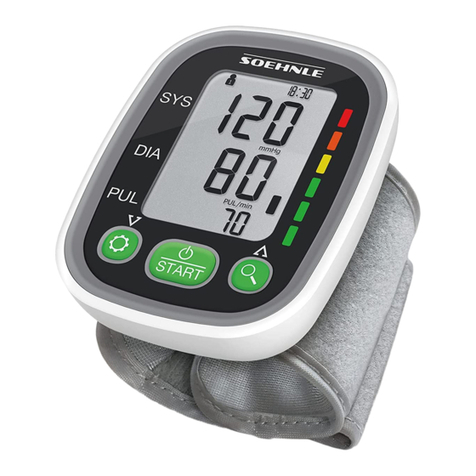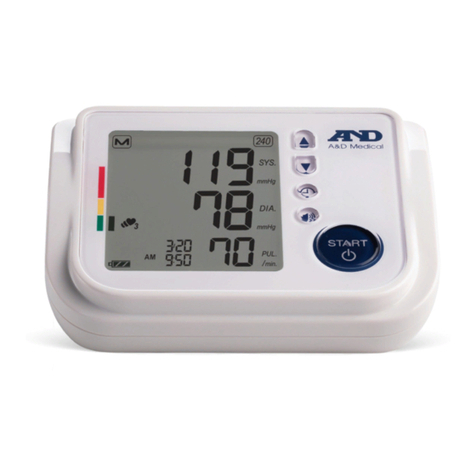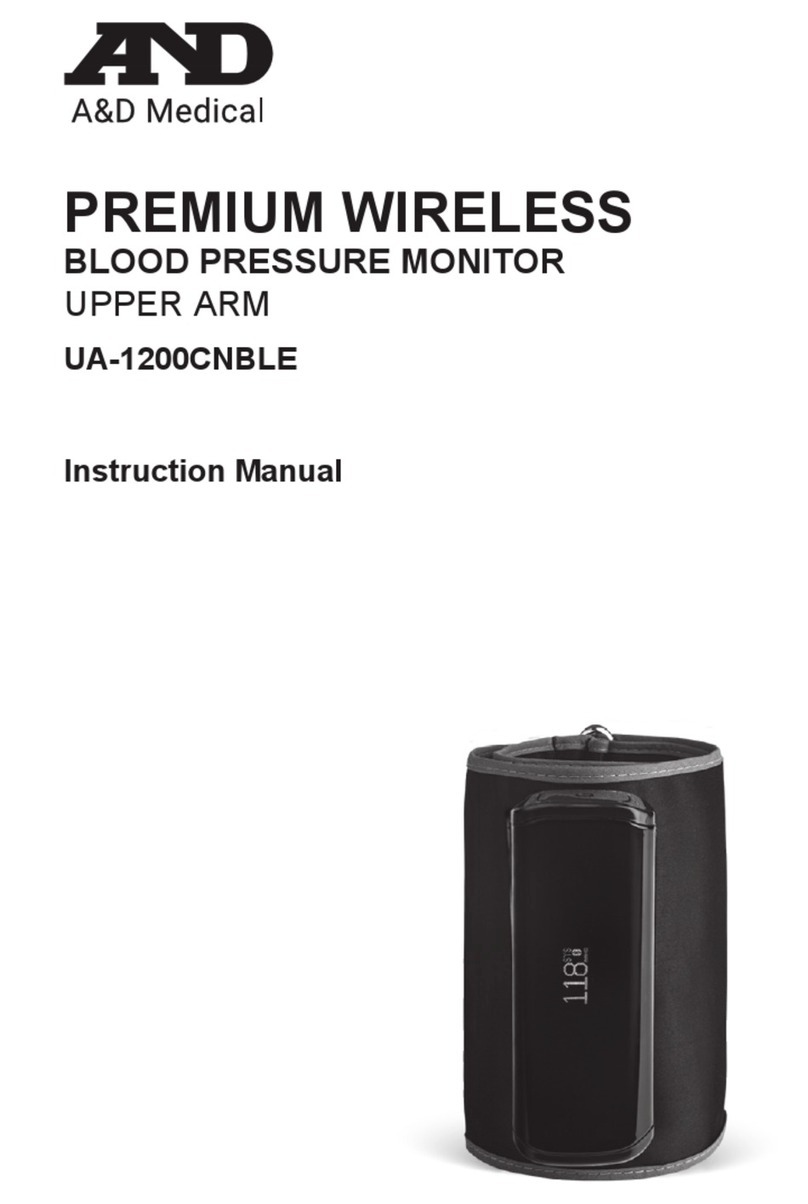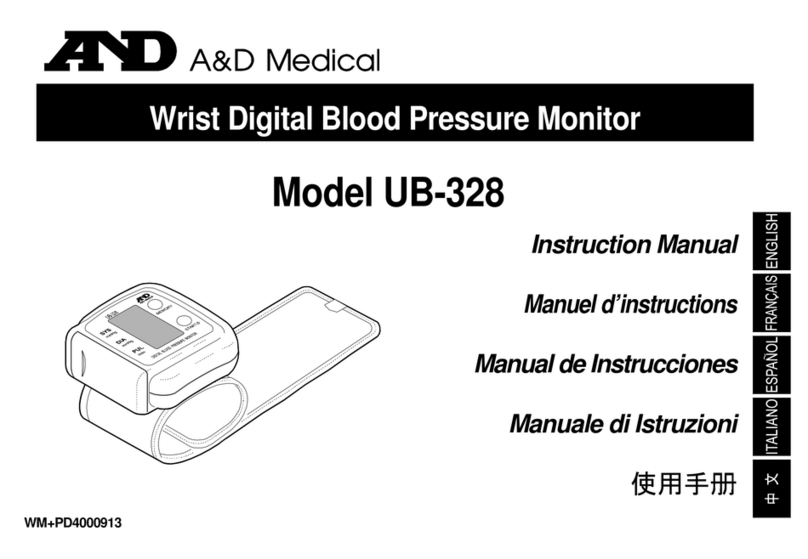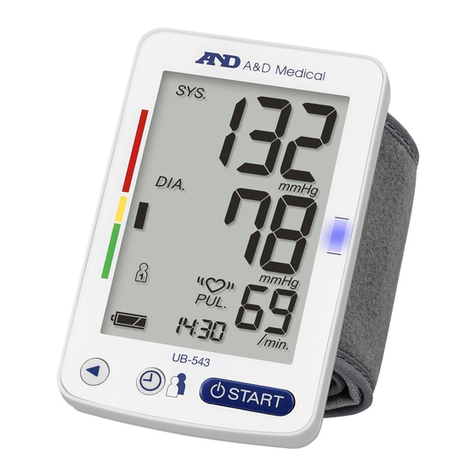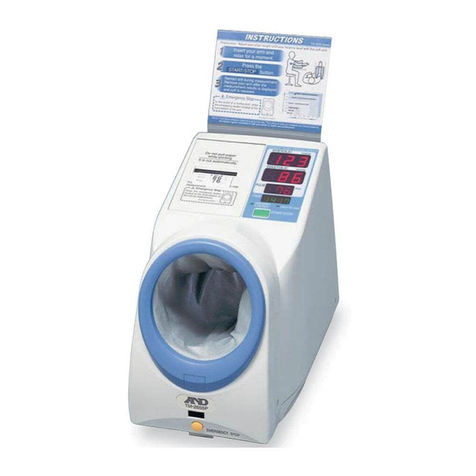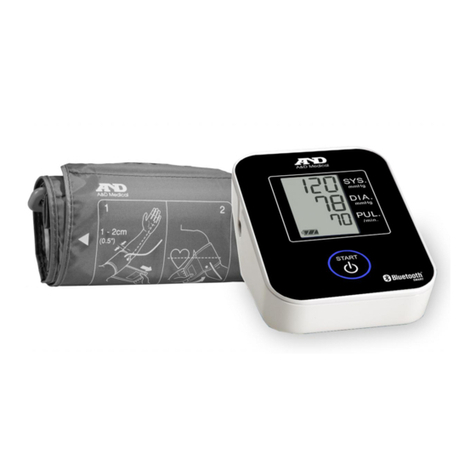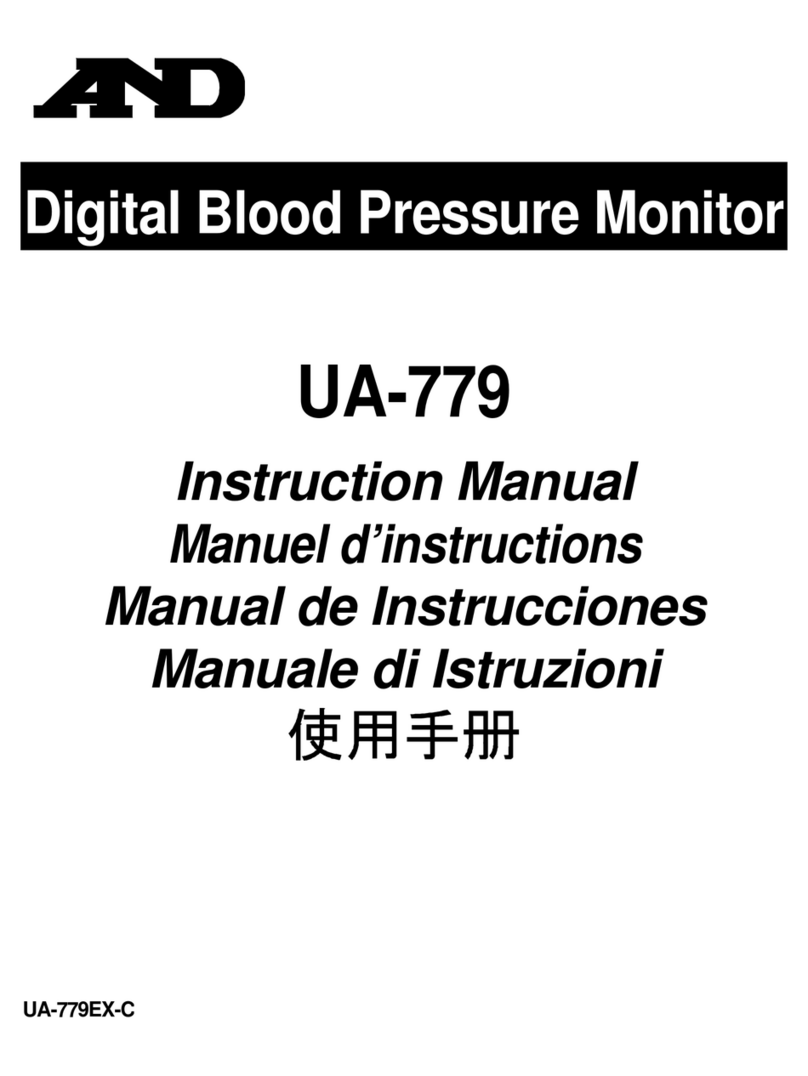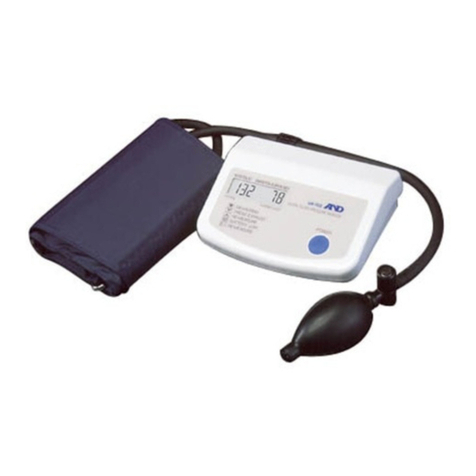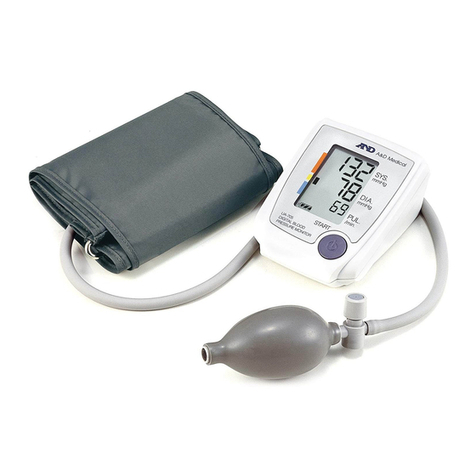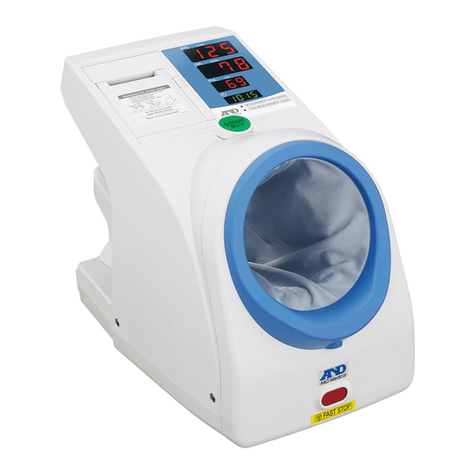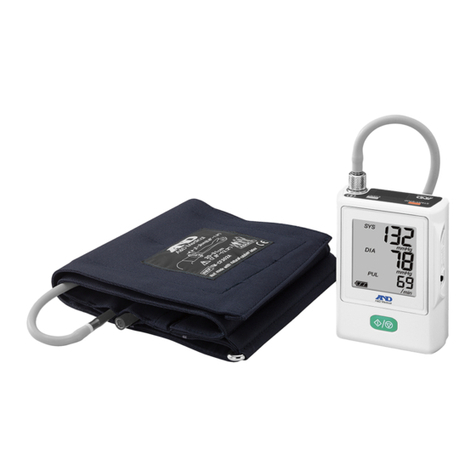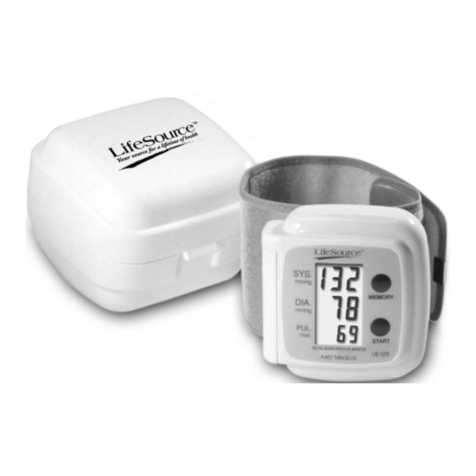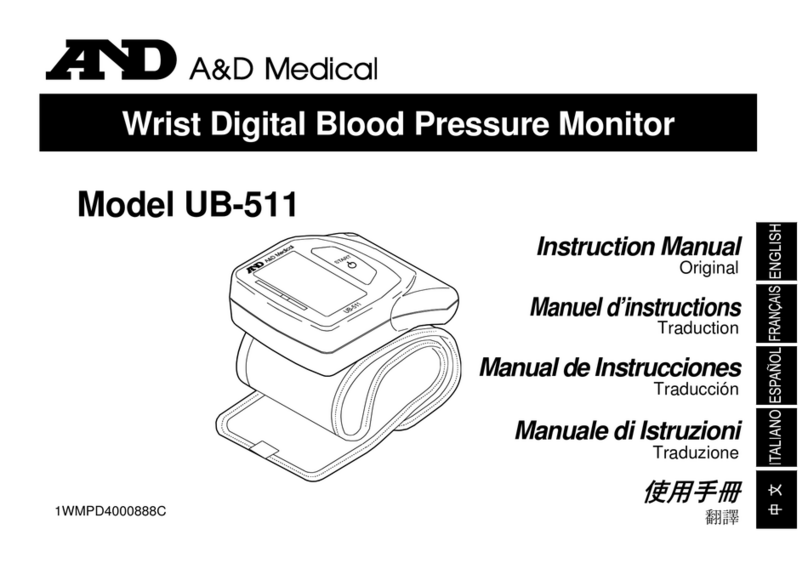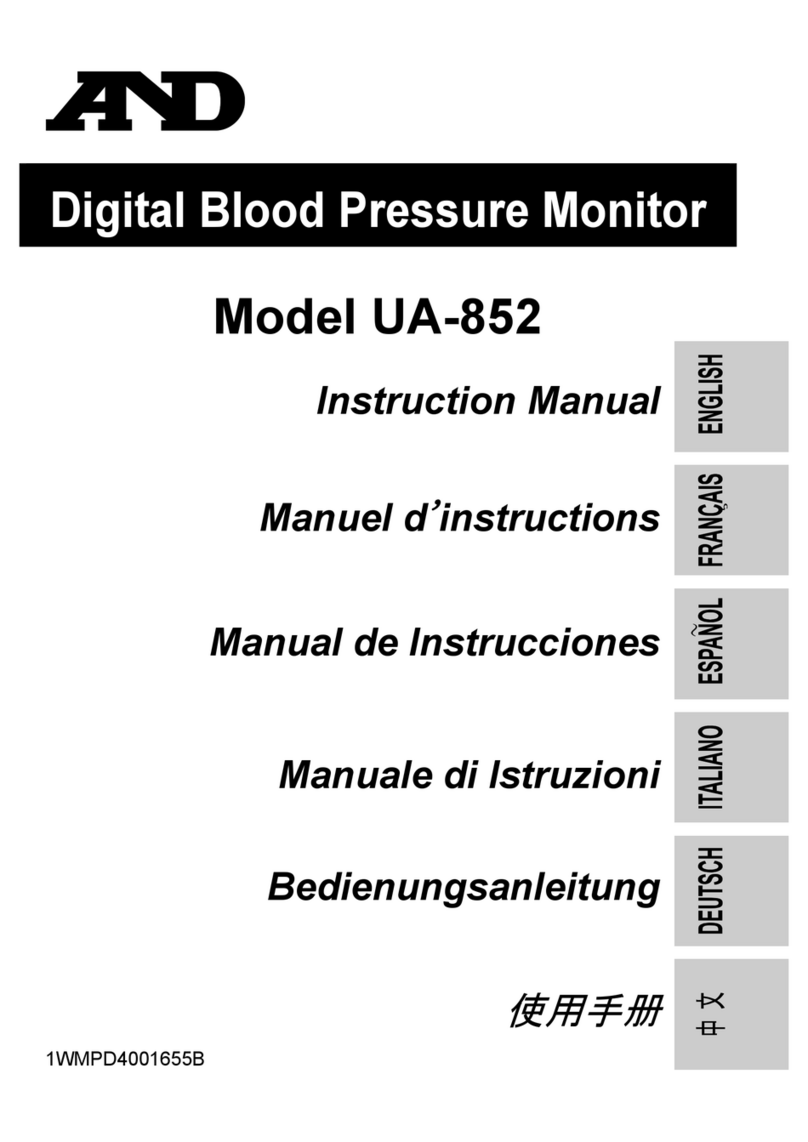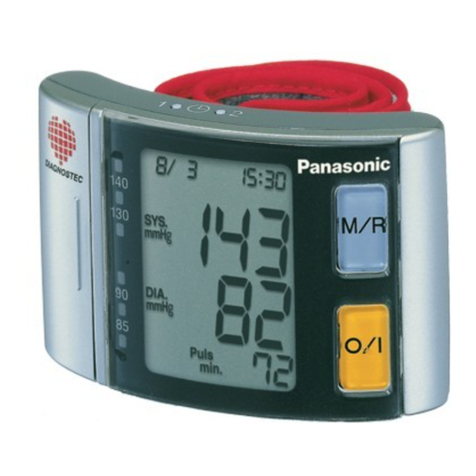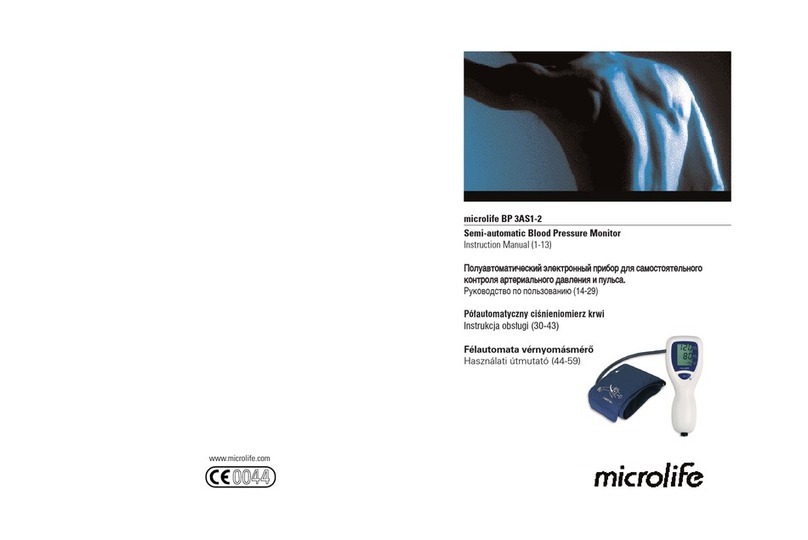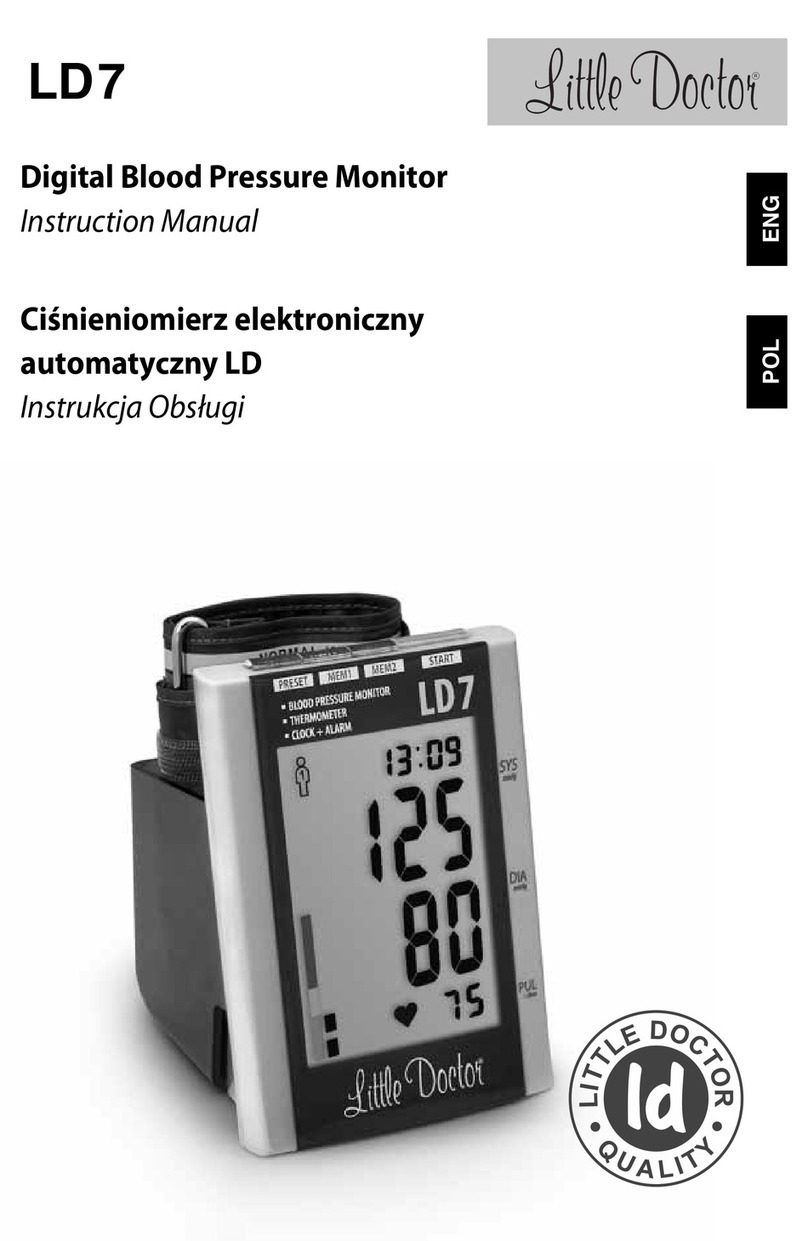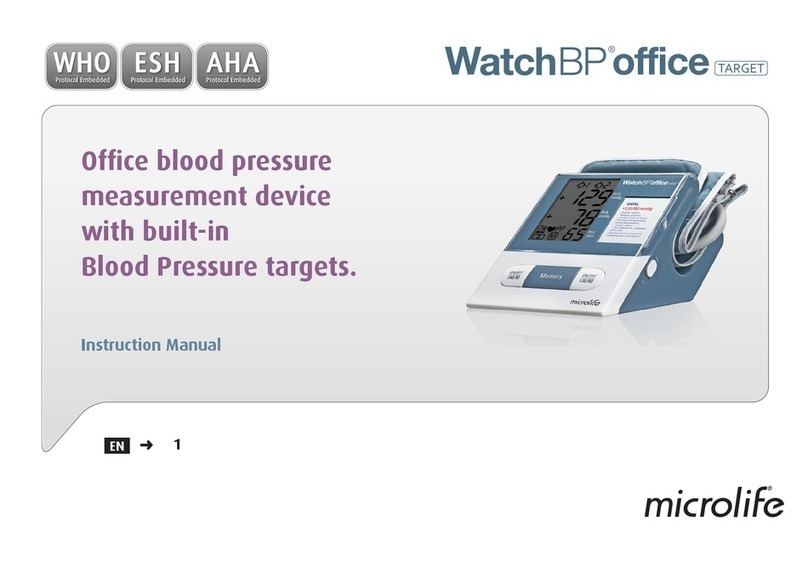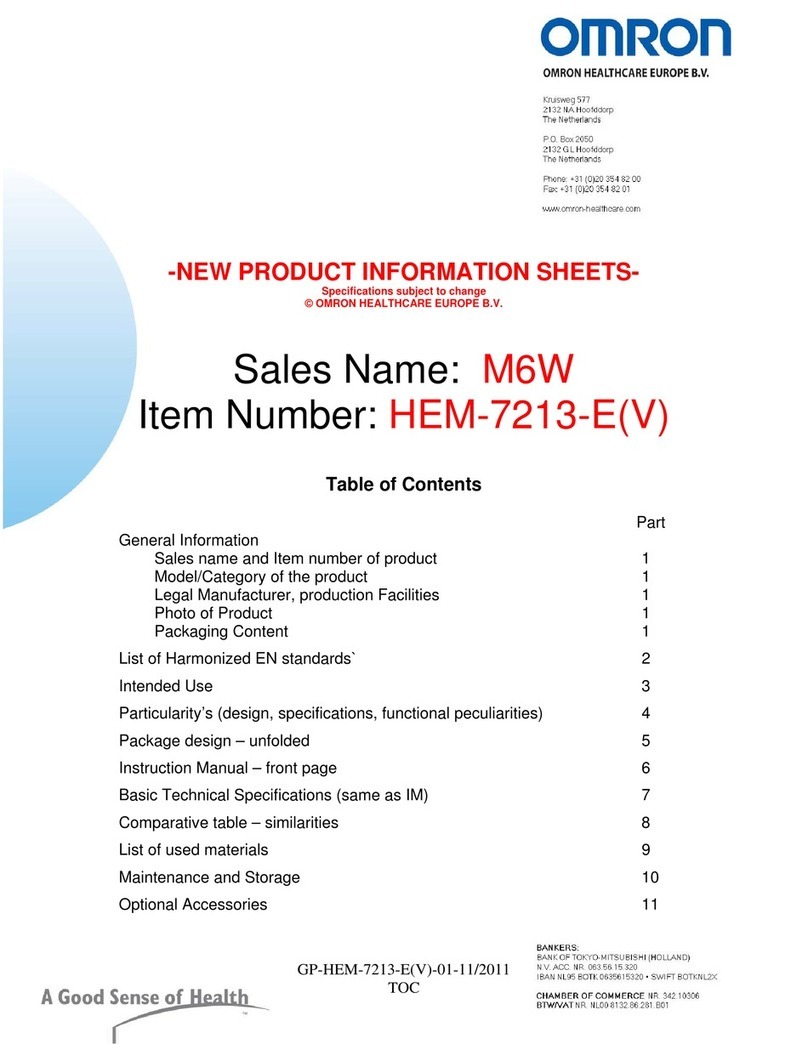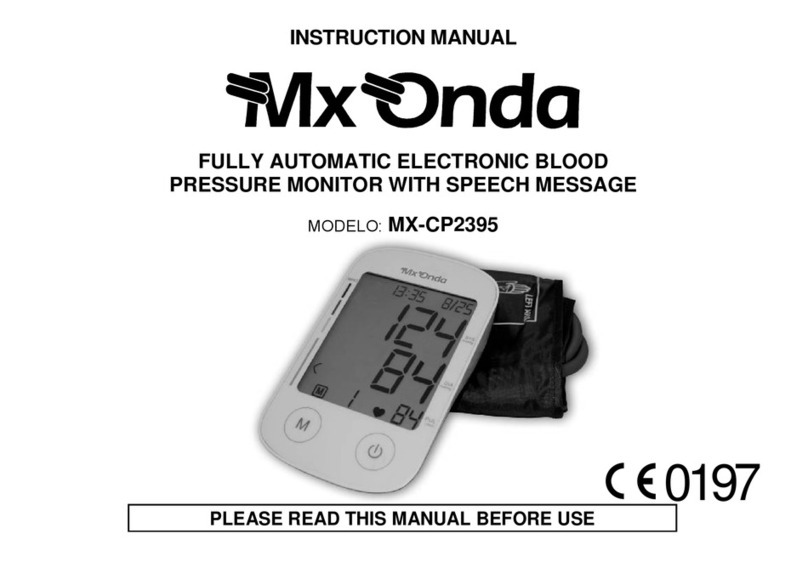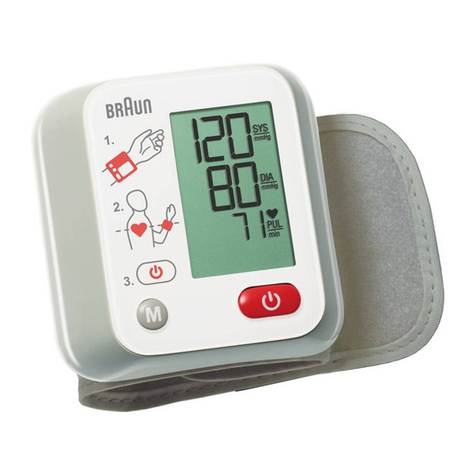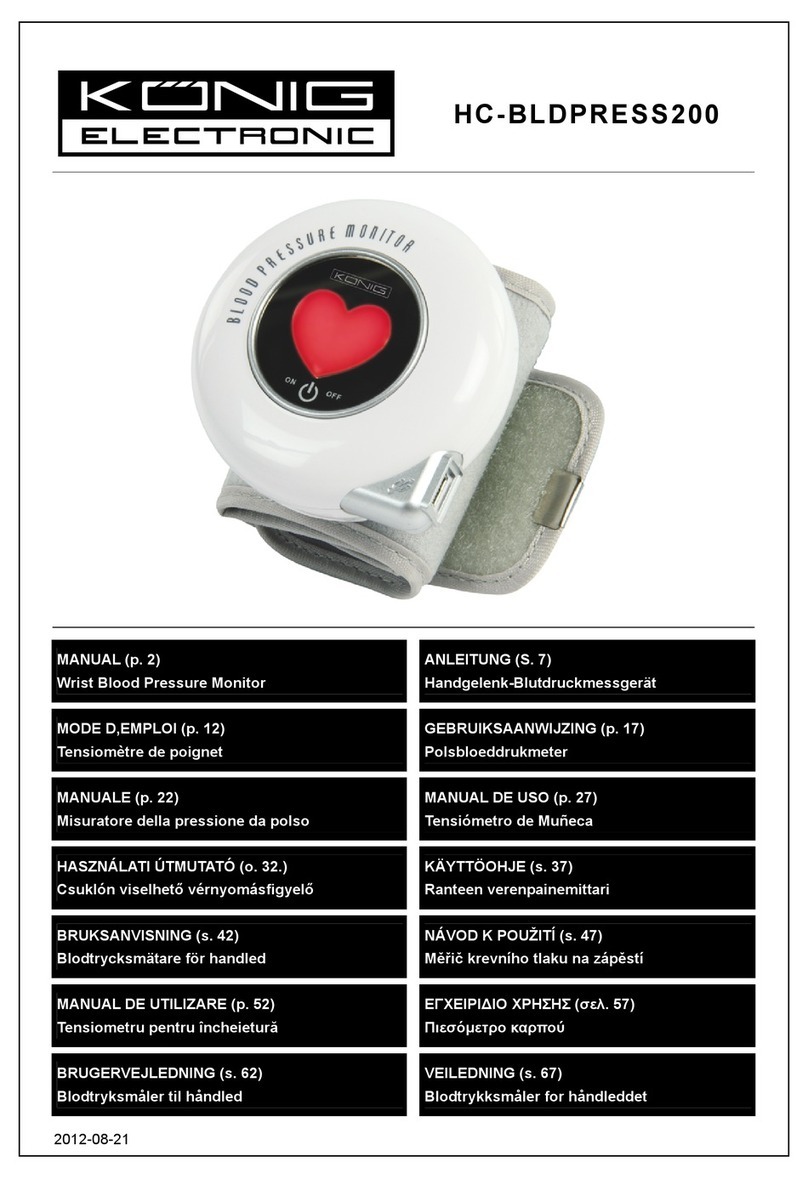
English 3
Used equipment, parts and batteries are not treated as ordinary
household waste, and must be disposed of according to the applicable
local regulations.
When the AC adapter is used, make sure that the AC adapter can be
readily removed from the electrical outlet when necessary.
Do not modify the device. It may cause accidents or damage to the device.
To measure blood pressure, the arm must be squeezed by the cuff hard
enough to temporarily stop blood flow through the artery. This may cause
pain, numbness or a temporary red mark to the arm. This condition will
appear especially when measurement is repeated successively. Any pain,
numbness, or red marks will disappear with time.
Measuring blood pressure too frequently may cause harm due to blood flow
interference. Check that the operation of the device does not result in
prolonged impairment of blood circulation, when using the device
repeatedly.
If you have had a mastectomy, please consult a doctor before using the device.
Do not let children use the device by themselves and do not use the device
in a place within the reach of infants. It may cause accidents or damage.
There are small parts that may cause a choking hazard if swallowed by
mistake by infants.
Unplug the AC adapter when not in use during the measurement.
Use of accessories not detailed in this manual may compromise safety.
Should the battery short-circuit, it may become hot and potentially cause
burns.
Allow the device to adapt to the surrounding environment before use (about
one hour).
Clinical testing has not been conducted on newborn infants and pregnant
woman. Do not use on newborn infants or pregnant woman.
Do not touch the batteries, the DC jack, and the patient at the same time.
That may result in electrical shock.
Do not inflate without wrapping the cuff around the upper arm.
Contraindications
The following are precautions for proper use of the device.
Do not apply the cuff on an arm with another medical electrical equipment
attached. The equipment may not function properly.
People who have a severe circulatory deficit in the arm must consult a
doctor before using the device, to avoid medical problems.
Do not self-diagnose the measurement results and start treatment by
yourself. Always consult your doctor for evaluation of the results and
treatment.
Do not apply the cuff on an arm with an unhealed wound.
Do not apply the cuff on an arm receiving an intravenous drip or blood
transfusion. It may cause injury or accidents.

